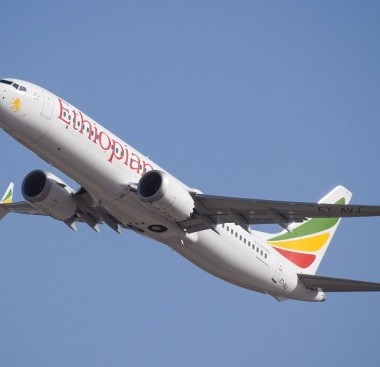Signal Ocean: Dry Weekly Market Monitor - Week 29 - 2024
Jul 18, 2024Chart of the Week: Ukrainian Grain Shipments to ALL Destinations
This week's chart illustrates the increase in the monthly volume of Ukrainian grain shipments during the first half of this year (left chart), following Russia's withdrawal from the Black Sea Grain Initiative in the summer of 2023. Despite the heightened security risks and logistical challenges, Ukraine has managed to significantly boost its grain exports through alternative routes and increased efficiency.
The data reveal that Spain and China have become the top destinations for Ukrainian grain, each accounting for 20% of the total exports, followed by Egypt with a 10% share (right chart). This diversification of export destinations highlights Ukraine's efforts to maintain its agricultural trade flows amidst geopolitical disruptions.
Per vessel class category, Panamax and Handysize vessels have absorbed a higher percentage of the grain shipments compared to Supramax vessels. The increased utilization of Panamax vessels, which can carry around 60,000 to 80,000 metric tons, and Handysize vessels, typically carrying between 10,000 to 40,000 metric tons, indicates a strategic adaptation to the constraints imposed by the current situation. These vessel classes are more versatile and can navigate alternative routes more efficiently than the larger Supramax vessels.

The third week of July concluded with a notable decline in the Capesize Brazil to North China rates, signaling a shift towards weaker market conditions exacerbated by an increasing number of ballast vessels in the SE Africa region. This rise in ballast vessels suggests a potential oversupply scenario looming ahead. Concurrently, the growth in demand tonne days indicates a subdued weekly percentage increase, indicating a cautious outlook for July, particularly in the larger vessel size segments.
In the grain segment, recent data illustrates a robust uptrend in the monthly volume of Ukrainian grain shipments during the first half of this year, surpassing figures from the same period last year. This growth trend presents promising trading opportunities, particularly benefiting the Handysize vessel size segment.
In the iron ore market, Vale SA’s iron ore production in the second quarter was stronger than expected, driven by robust output at its biggest mine in the north of Brazil. The world’s second-biggest iron ore supplier said the quarter’s performance reinforces its confidence in achieving the upper end of its 2024 production guidance for the steelmaking ingredient.
SECTION 1/ FREIGHT - Freight Rates ($/t) Mixed
‘The Big Picture’ - Capesize and Panamax Bulkers and Smaller Ship Sizes

In the third week of July, the dry bulk freight market witnessed a decline in rates for the Cape Brazil to North China routes. In contrast, the Panamax Continental Far East rates showed a stronger performance. Meanwhile, the smaller vessel size segments maintained resistance, suggesting a stable or stronger outlook.
|
SECTION 2/ SUPPLY - Ballasters (# vessels)
Increasing
Supply Trend Lines for Key Load Areas

In the third week of July, the Cape and Panamax SE Africa markets, which had been on a declining trend in previous weeks, showed a reversal with an upward movement. Similar increases were also observed in the smaller vessel size segments.
|
SECTION 3/ DEMAND - Tonne Days Decreasing
Summary of Dry Bulk Demand, per Ship Size
 |
In the third week of July, the outlook for dry tonne days indicated a weakening trend. Both the large vessel size segment and the Handysize experienced signs of slower growth. In contrast, the Supramax segment maintained a more robust outlook.
|
SECTION 4/ PORT CONGESTION - No of Vessels IncreasingDry bulk ships congested at Chinese ports |

In the third week of July, Chinese dry bulk port congestion continued its upward trend from the previous week, reaching a new peak for the current year.
- Capesize: Capesize ship congestion surged to over 140 vessels, marking a substantial increase of more than 20 ships compared to levels observed three weeks prior.
- Panamax: The number of Panamax vessels rose to the 260 mark, an increase of nearly 14 compared to the previous week.
- Supramax: Congestion levels remained above 300, representing an increase of 40 vessels compared to three weeks ago.
- Handysize: Congestion levels held levels around 180, this marks an increase of nearly 15 compared to levels observed seven weeks ago.
Similar Stories

AMBPR completes sale of first five ship repair robots to Damen Shiprepair Dunkerque
View Article
Expert workshop discusses IMO “mid-term” GHG reduction measures
View Article
Ports of Indiana celebrates first new dock in 20 years; $6 million berth to serve ocean vessels at Lake Michigan port
View Article
CMA CGM Announcement: PCS (Port Congestion Surcharge) from North Europe to Algeria
View Article
DNV celebrates advances in ship autonomy
View Article
WorldACD Weekly Air Cargo Trends (week 35) - 2024
View ArticleGet the most up-to-date trending news!
SubscribeIndustry updates and weekly newsletter direct to your inbox!





